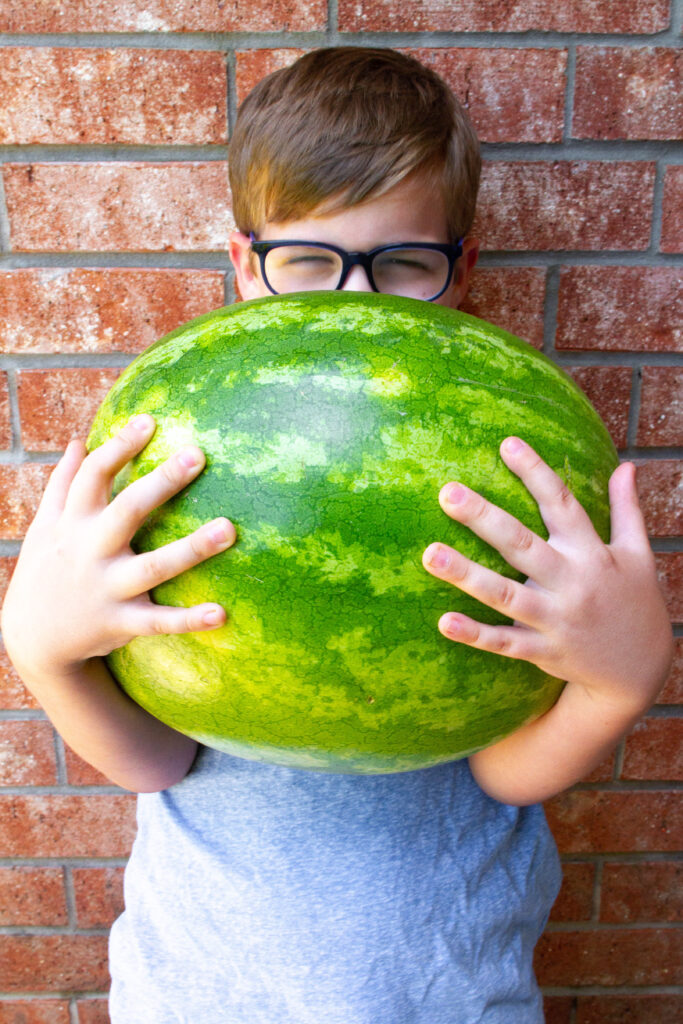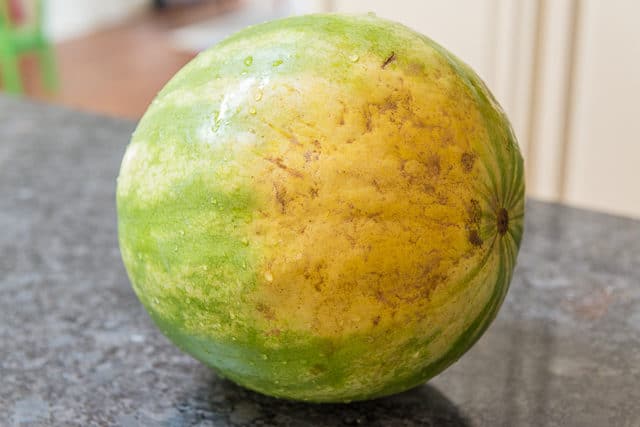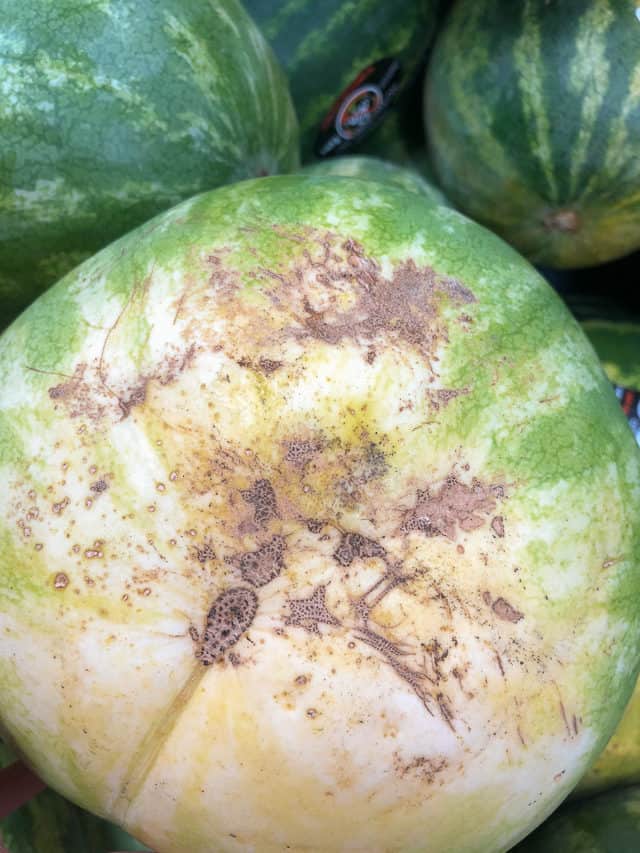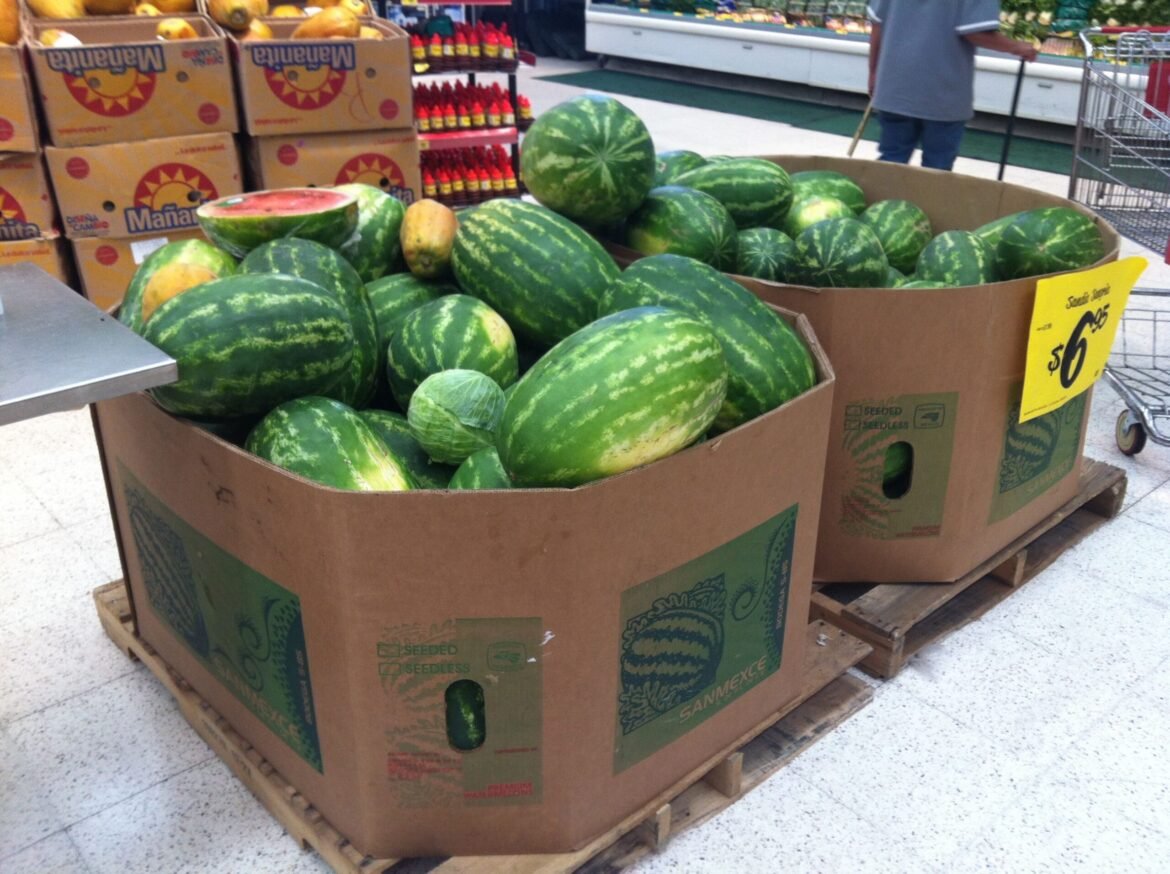By Steve Barasch:
Walking into your supermarket’s produce department you see bins of watermelon. Warmer weather is here and it’s time for backyard cookouts, dancing under the stars and watermelon.Choosing the sweetest watermelon is easy, yet certainly a direct challenge if you don’t know how. For sure it’s summertime and as far as fruit goes there is nothing more refreshing than a sweet, juicy slice of watermelon. Even if you’re single or a household of two, your grocer will also have personal size watermelons ranging in the 5-pound range seedless type. What I like about the personal size is it’s small enough to chill in the refrigerator before slicing. If you watch people pick and choose, you’re going to see varying rituals as they hunt to select the best one. So, let’s get down to it. Your search should cover several tests before slicing it open.

Seeded or Seedless
There’s no doubt seedless watermelon has become more popular than seeded ones. They are less messy, just as sweet, and easier to find at the store. Manual pdf Selecting between the two is of course a personal choice. The seeded watermelon is going to be more oblong in shape and the seedless rounder. The actual selection method is the same for each one. For practical purposes, selecting a seedless watermelon will be the focus.
Selection
- The field spot is a creamy spot on the outside, and it’s where the watermelon was resting on the ground. The field spot should be a yellowish creamy color, as shown below: The darker yellow the field spot is, the longer it was on the vine sweetening up. If the field spot is white (or not even there), this indicates an underripe melon. The overall color of the watermelon should be a darker green with light creamy yellow stripes.

- A shiny appearance indicates an underripe melon. This applies to honeydew melons too.
- The knuckle tests. Your knuckles should bounce off the melon, and the surface should be pretty hard/firm. You will get a dull thud if the flesh is soft, which indicates it’s starting to spoil. The sound should be hollow sounding.
- Find the heaviest one for its size. This applies to pretty much all produce, but you want to pick the watermelon that is the heaviest one for its size. That means there’s more water in it.
- Some watermelons are round, some seedless are more oval. Manual pdf A rounder shape is said to be better. If there are irregular bumps, this indicates the melon may have gotten inconsistent amounts of sun or water.
- Look for the sugar spots and pollination points. If you see black spots on the melon (as pictured below), this is where sugar is seeping out and indicates a sweet melon. Also, if you see dots in a line (not a scratch), these are pollination points, and the more of them the better.

7) Finally, check the stem. It should be a yellowy brown color, not green.
Now that you know what to look for in a watermelon, these simple steps to choosing the best watermelon every time will put a smile on your face and everyone else. Now It’s time to slice it up and store it Check out this guide: Easy removal of the Watermelon rind


